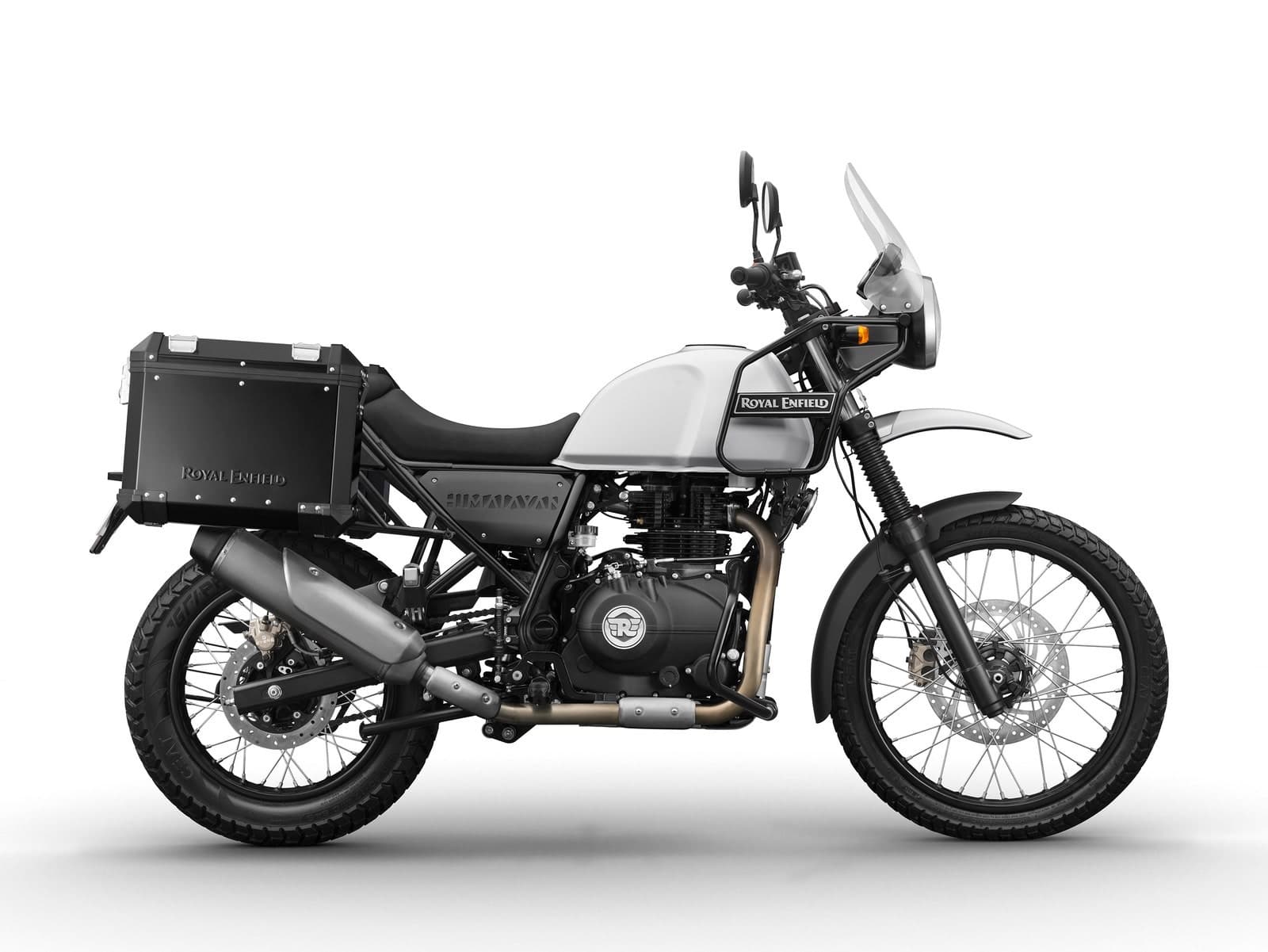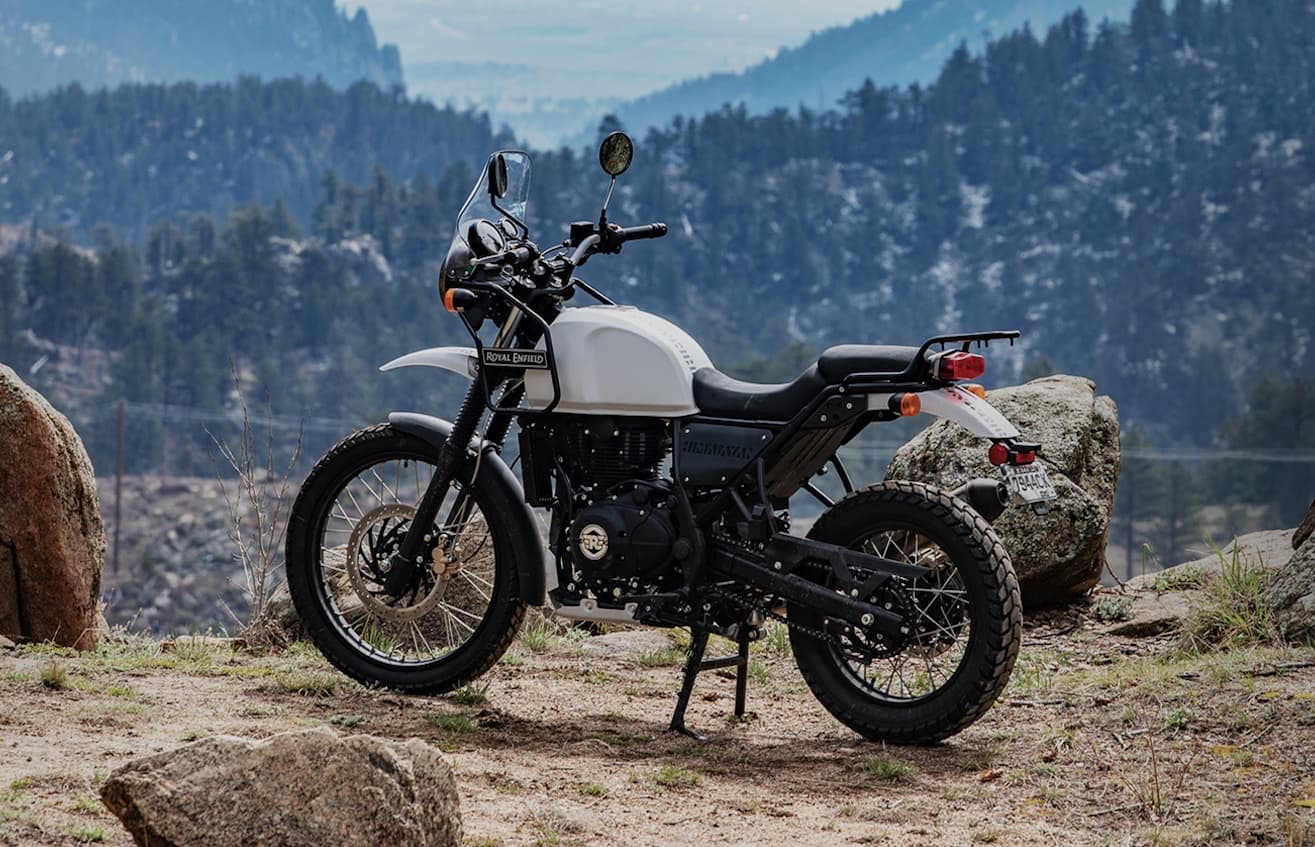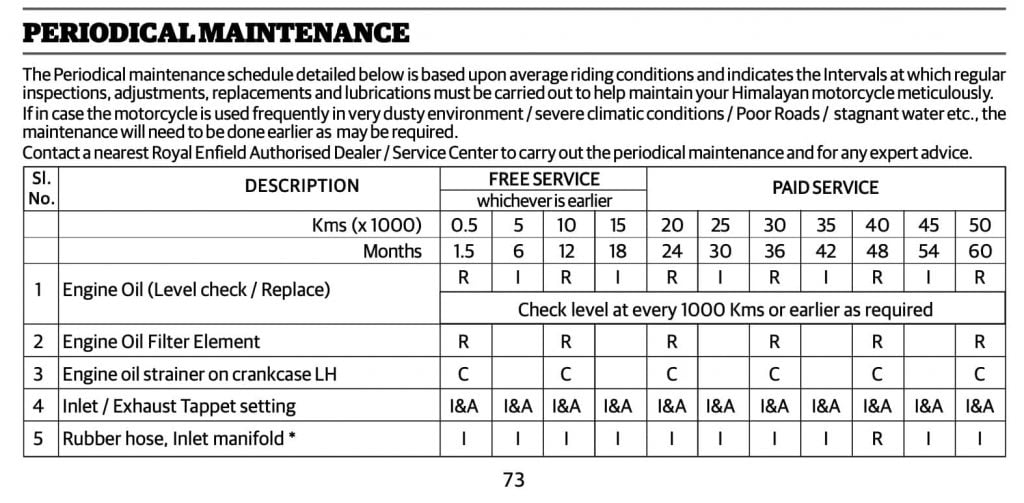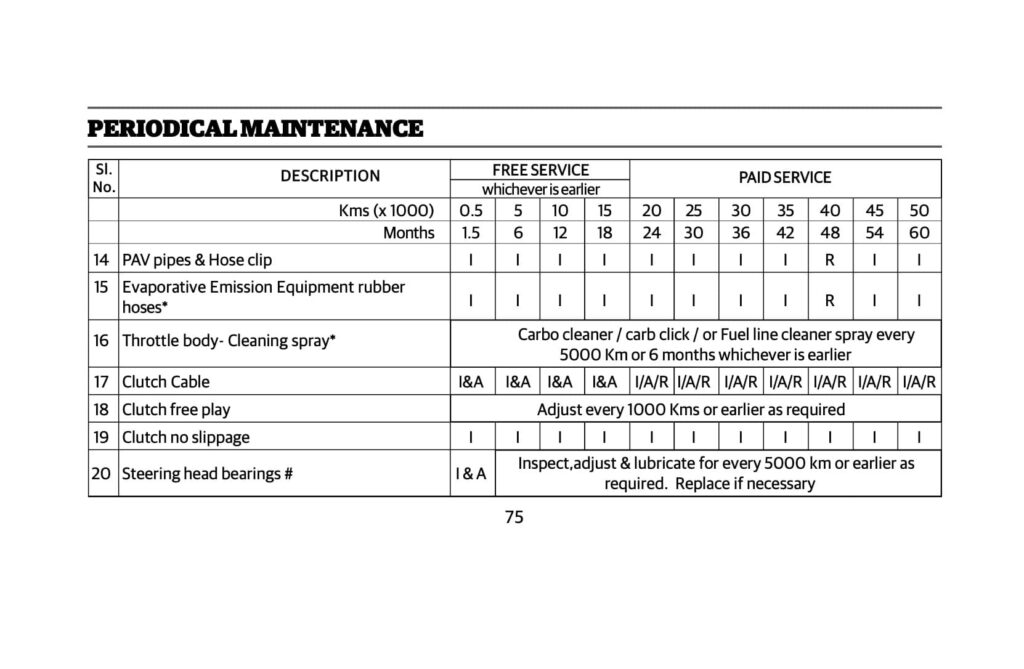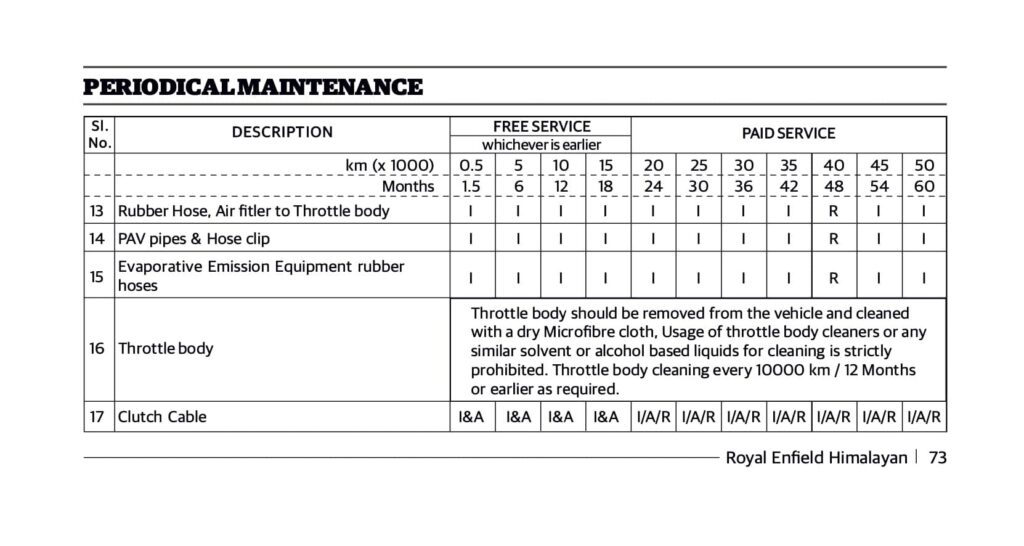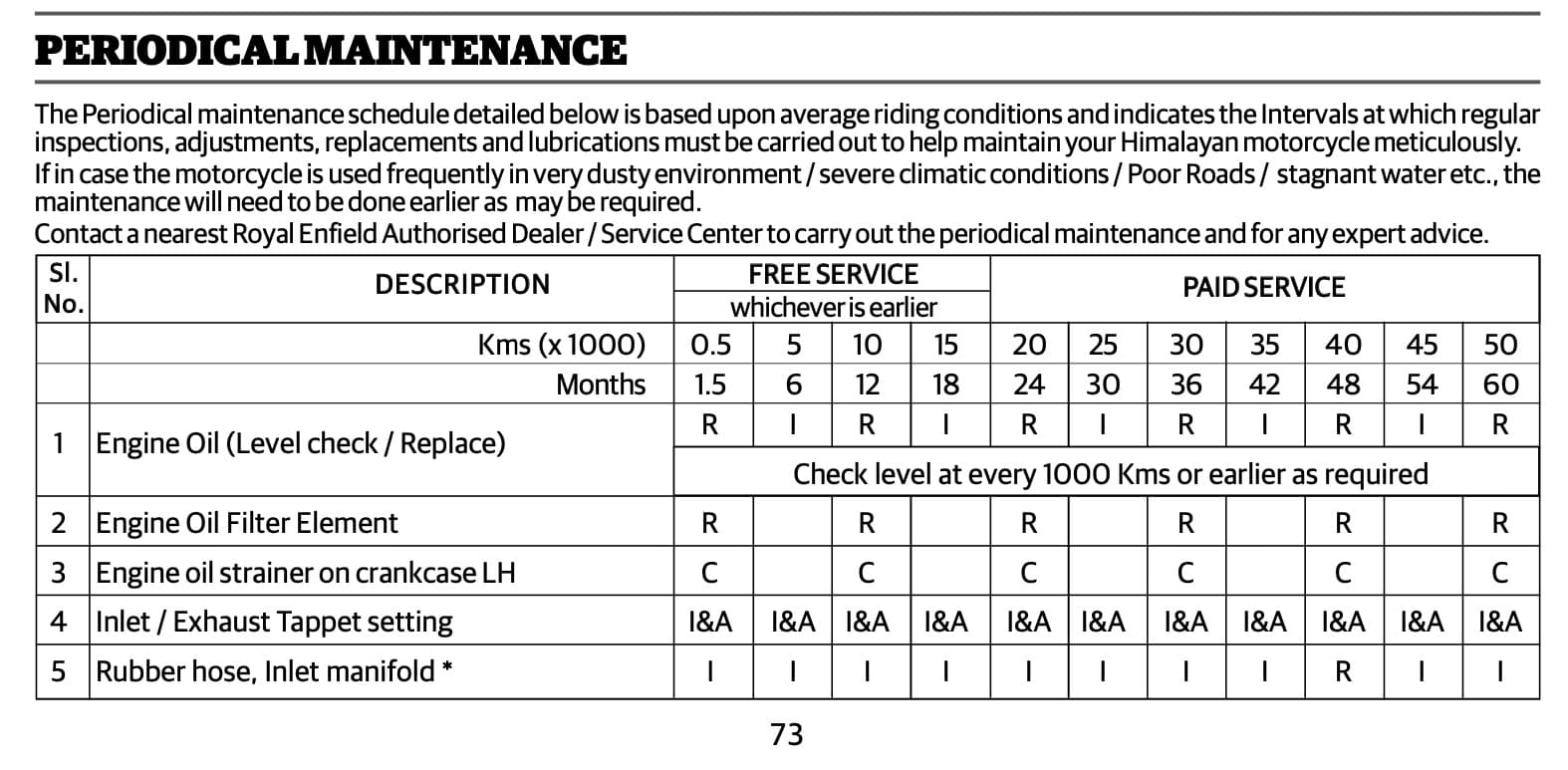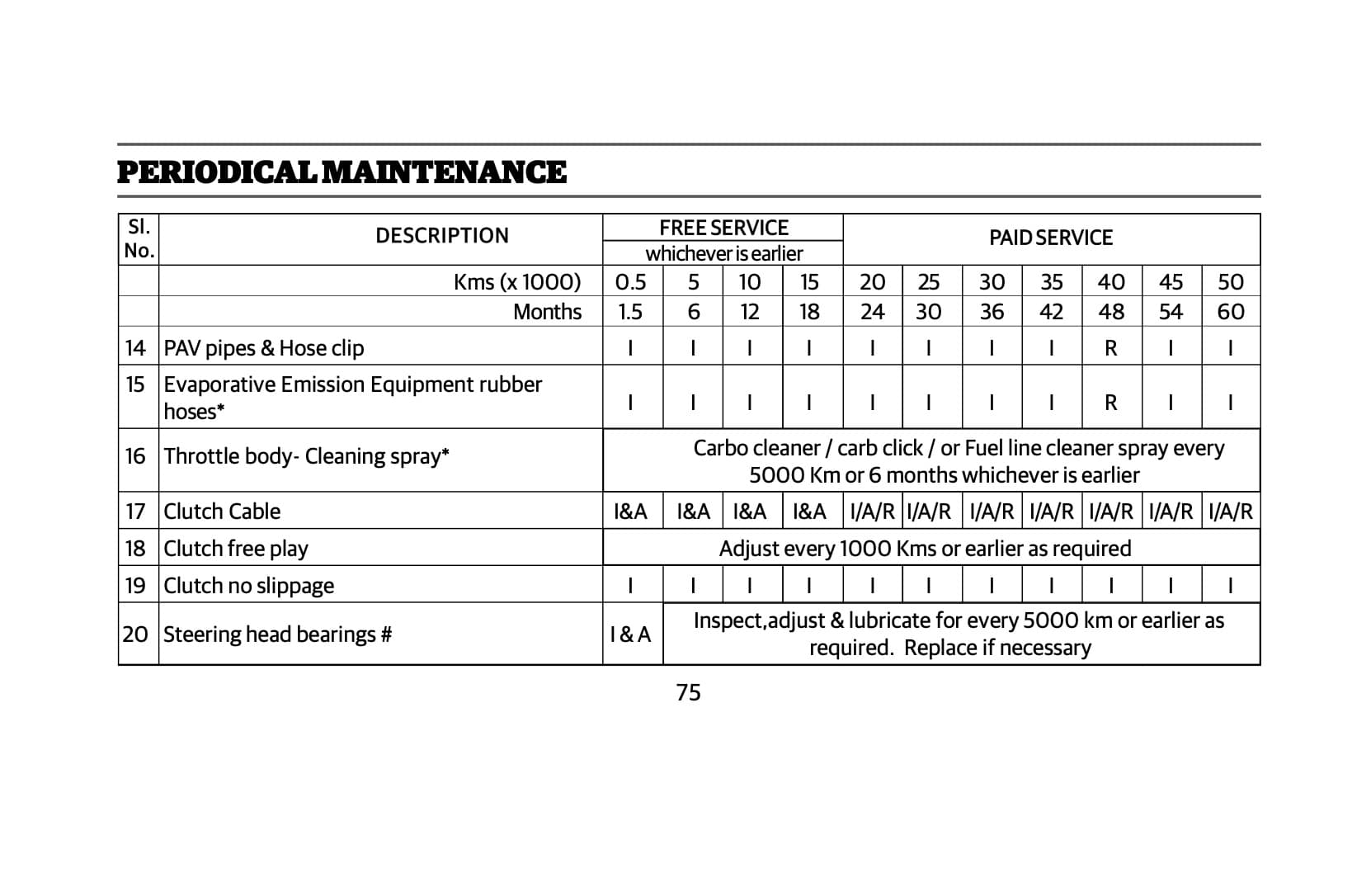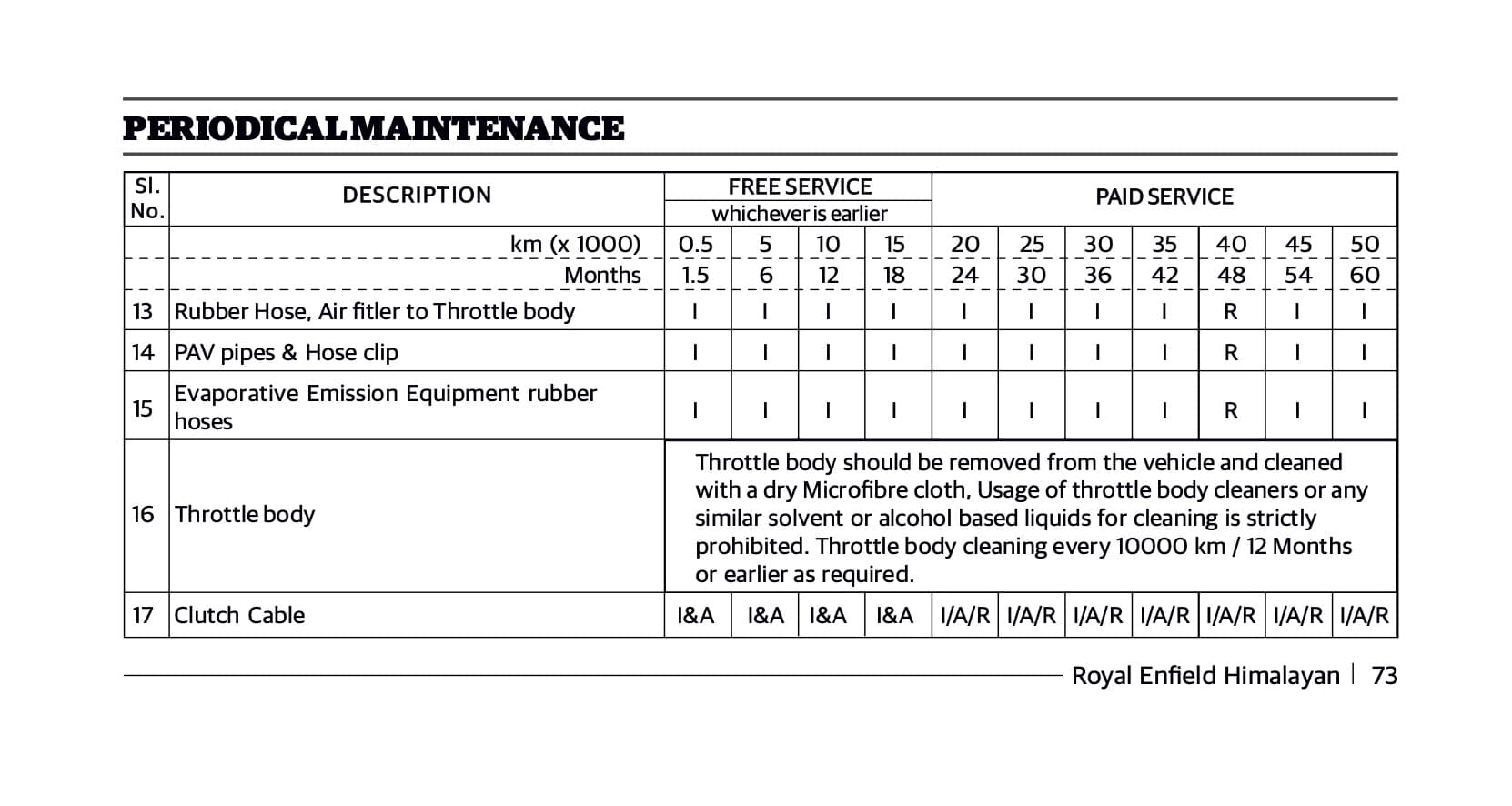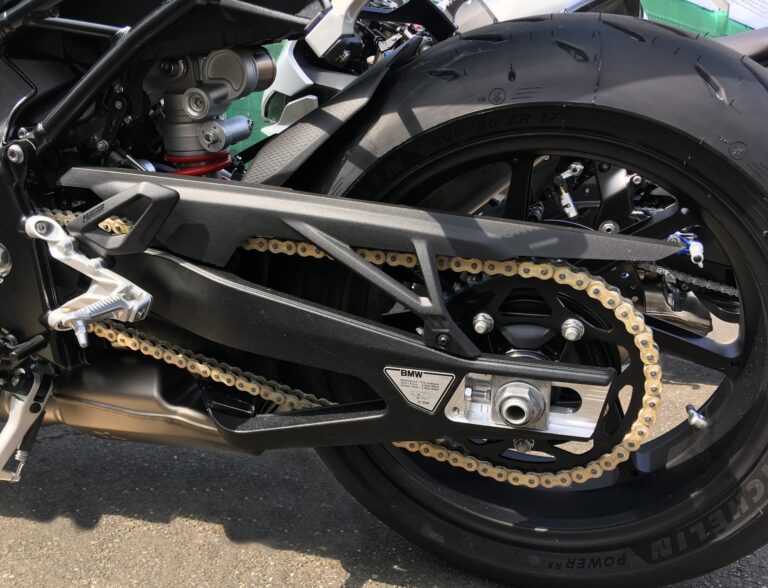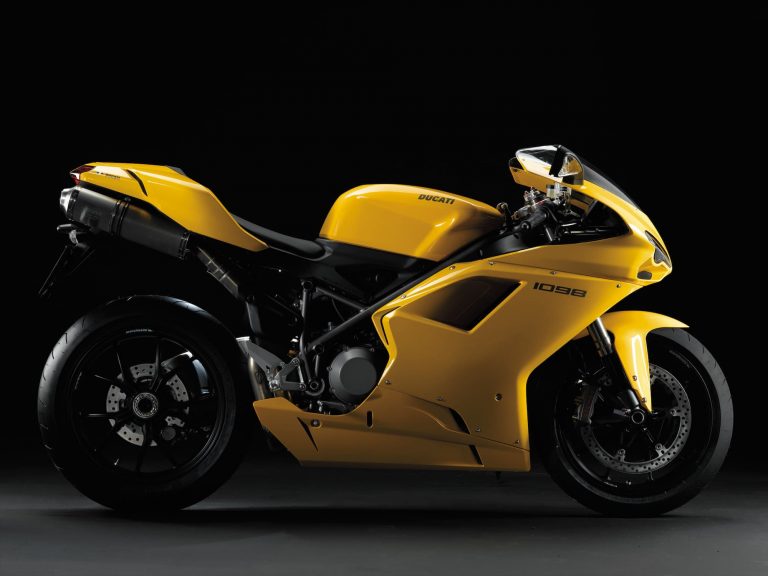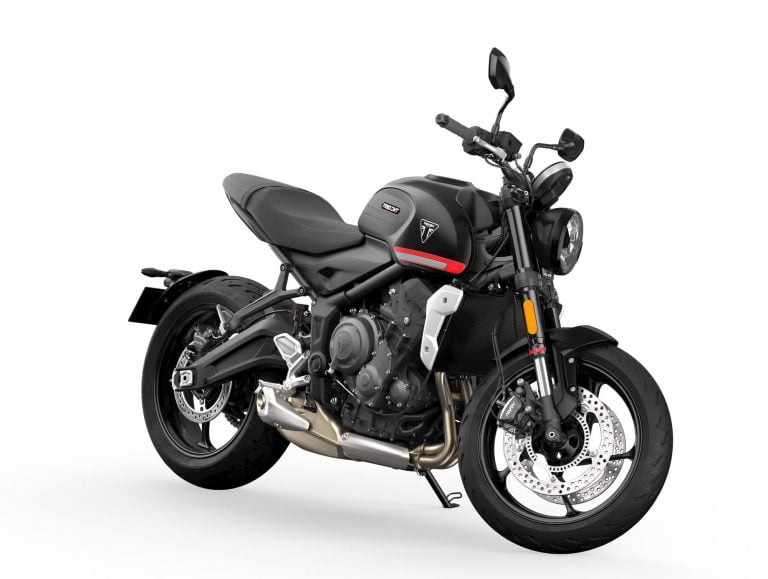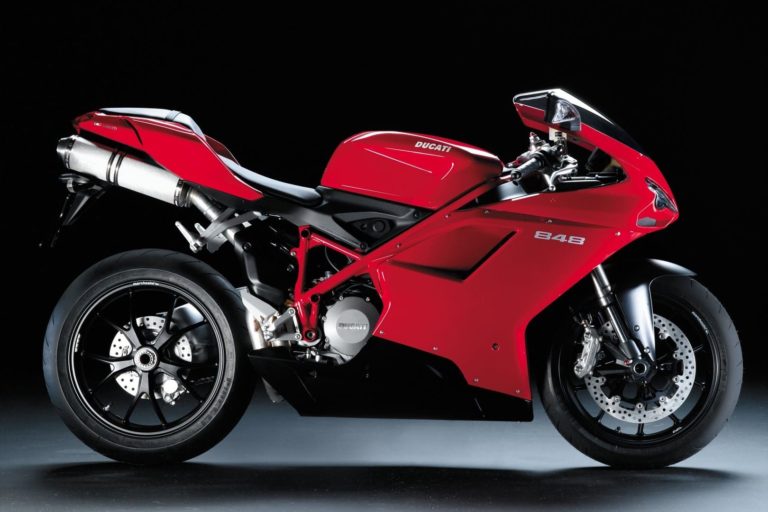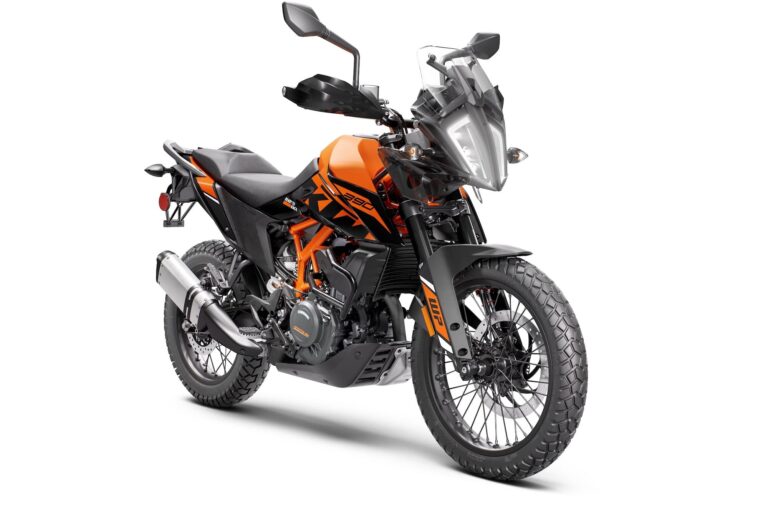Royal Enfield Himalayan (EFI, 1st gen) Maintenance Schedule
This is the maintenance schedule and service intervals for the first-gen fuel-injected Royal Enfield Himalayan, a compact adventure bike from Indian motorcycle company Royal Enfield. This is applicable for the 411 cc Himalayan with EFI — including the Indian BSIV and BSVI specs.
Fundamentally the 1st gen Royal Enfield Himalayan was always been the same basic motorcycle: a 411-cc single-cylinder compact adventure bike with a handsome chassis. The engine is air/oil-cooled and has a single overhead camshaft.
The 1st gen Himalayan be compared to other compact adventurers like the Honda CRF300L Rally, but there’s a lot that’s unique about the Himalayan. Since 2022, you could get the same motor in “Scrambler” format in the Royal Enfield Scram 411.
See other Royal Enfield Himalayan / Scram maintenance schedules:
- Royal Enfield Himalayan Carburettor (2016-2020)
- Royal Enfield Himalayan EFI BSIV/BSVI (2018+)
- Royal Enfield Scram 411 Maintenance Schedule (2022+)
- Royal Enfield Himalayan 450 (2024)
The Royal Enfield Himalayan was originally sold as a carburettor-fed motorcycle, but Royal Enfield updated it to fuel injection in 2017 (though it didn’t reach some other markets until later, some as late as 2020) to conform with modern emissions standards. The 2021 model got switchable ABS, and the 2022 model received the Tripper navigation system.
From 2024, Royal Enfield updated the Himalayan significantly, with the liquid-cooled and much more powerful Royal Enfield Himalayan 450.
This was originally published on July 2, 2021, but has since been significantly updated with more information about service intervals, a simplified maintenance schedule, and other guidance on maintenance.
This site has links for things like oil and spark plugs from which we earn a commission (which unfortunately nobody can save, not even us). If you appreciate this work, then please use those links. Thanks!
Royal Enfield Himalayan EFI Service Intervals
The 1st-gen 411 cc Royal Enfield Himalayan EFI has 5000 km / 3000 mile service intervals, at which you have to check the valve clearances (see below for the specs), check the spark plug, and check most of the motorcycle for leaks and lubrication.
The very short valve clearance interval is quite aggressive, and one reason many owners of the Himalayan may be surprised by higher-than-expected ownership cost. But if you’re adept, you can do the service yourself — there’s just the one cylinder, and only two valves.
The Himalayan at least has relatively wider oil / filter change intervals — you only need to change them every 10000 km / 6000 miles.
Being an air-cooled engine, there’s at least no coolant to worry about. But you do have to keep that chain clean.
What you need to service the Royal Enfield Himalayan (EFI)
Some of these parts are different on other spec sheets — Make sure you get the right ones.
| Part | Royal Enfield Himalayan Spec |
|---|---|
| Engine oil | Oil changes every 10K km. Manual calls for SAE 15W-50 API SL Grade JASO MA 2 Semi-Synthetic, e.g. Mobil 1 15W-50. |
| Oil filter | You need a Himalayan Oil Filter Kit which includes washers and gaskets to replace the oil filter (which is every time you change the oil). |
| Spark plug | Bosch UR5CC (0.7-0.8mm) per the manual. This is equivalent to the NGK CR8E. |
| Air filter | You need to clean the air filter periodically but replace it when you change the oil — or more often if you ride it in the dirt. K&N part number is RB-0510 for a universal clamp-on. |
| Brake fluid | The manual calls for DOT 4 brake fluid, e.g. Castrol DOT 4 |
| Fork oil | Use 10W weight fork oil, e.g. Honda SS-8 |
| Headlamp | The front headlamp is a H4 60/55W bulb |
| Brake lamp | The rear brake lamp is a 4/1W LED |
| Chain | Use a chain lubricant like Motul chain paste periodically to keep the chain fresh. |
| Grease | Use lithium soap-based grease for general greasing (bearings, swing-arm, kickstand etc.) |
Royal Enfield Himalayan (EFI) Maintenance Schedule
Below is the maintenance schedule for the Himalayan based upon average riding conditions. If you use your Himalayan in a dusty environment, the wet, on poor roads, in stagnant water etc, you may have to maintain your motorcycle more often — particularly the chain, brakes, suspension, and engine oil.
We’ve cleaned up some ambiguities and typos in the original schedule. For example, the original manual said you should change the cush rubbers every 5000 kms from 20000 kms onward, which makes no sense — I assume it means inspect every 5000 kms, and replace every 20000 km or as needed.
Further, we separated the maintenance schedule into two sections
- The core service schedule of important items like oil changes, spark plug inspections, and valve clearance checks
- The standard service checklist to be done at every service.
Notes on the maintenance schedule
- The Himalayan includes free service up to 15,000 km or 18 months — whichever arrives earlier. (i.e. the first three services)
- Keep following this maintenance schedule in the pattern shown.
Service Schedule
Below is the service schedule of major items — engine oil, tappets, spark plugs, and so on.
| Kms (x 1000) | 0.5 | 5 | 10 | 15 | 20 | |
|---|---|---|---|---|---|---|
| Months | 1.5 | 6 | 12 | 18 | 24 | Notes |
| Standard service checklist (see below) — Perform | ✓ | ✓ | ✓ | ✓ | ✓ | |
| Engine Oil — Replace (Mobil 1 15W-50) | ✓ | ✓ | ✓ | |||
| Engine Oil Filter Element — Replace (Himalayan Oil Filter Kit) | ✓ | ✓ | ✓ | |||
| Engine oil strainer on crankcase left-hand side — Clean | ✓ | ✓ | ✓ | |||
| Inlet / Exhaust Tappet setting (Valve clearances) — Inspect / Adjust | ✓ | ✓ | ✓ | ✓ | ✓ | |
| Spark plug — Check / Adjust | ✓ | ✓ | ✓ | ✓ | ||
| Spark plug — Replace (CR8E) | ✓ | Every 15000 km / 18 months | ||||
| Fuel Pump (under tank) Mounting — Check for screw tightness | ✓ | ✓ | ✓ | ✓ | ✓ | |
| Air filter – Clean | ✓ | ✓ | ✓ | More frequently if motorcycle used in dusty / off-road conditions. | ||
| Air filter – Replace (RB-0510) | ✓ | ✓ | ||||
| Accelerator Cable — Inspect / adjust | ✓ | ✓ | ✓ | ✓ | ✓ | |
| Throttle body — Clean with carburettor cleaner or fuel line cleaning spray. | ✓ | ✓ | ✓ | ✓ | ✓ | |
| Clutch Lever / Cable — Inspect / Lubricate / adjust free play | ✓ | ✓ | ✓ | ✓ | ✓ | Adjust earlier as required. Replace cable if worn |
| Steering head bearings — Inspect for free movement. Replace if necessary | ✓ | ✓ | ✓ | ✓ | ✓ | |
| Earth wire eyelet Tightness — Inspect / adjust | ✓ | ✓ | ||||
| Hydraulic Brake Fluid (Front & Rear) — Replace | ✓ | Replace every 2 years or 20000 km | ||||
| Front Fork oil/ fluid — Replace | ✓ | Every 20000 km |
Standard service checklist
Below is the standard service checklist. Do these items according to the schedule above.
Note — If you ride your Himalayan in adverse conditions (e.g. dusty roads, in the rain, etc.) you may need to clean or lubricate many components more regularly.
Some items have long-term replacement schedules, many of them at 40000 km but some at slightly different schedules, too.
| Regular checks | Notes |
|---|---|
| Rear Wheel Drive Chain — Clean, lubricate, and adjust (including chain slack / tension) | Every 1000 Kms / 600 mi or earlier as required |
| Engine oil — Inspect level | Inspect more often (e.g. before rides) as possible |
| Brake fluid — Inspect level | |
| Hydraulic brake hose & Washers – Front & Rear — Check | |
| Oil cooler inlet & outlet pipes — Inspect condition | |
| HT leads — Inspect for cracks | |
| Rubber hose, Inlet manifold — Inspect | Replace every 40000 km / 6 years |
| Fuel Hose & Clip — Inspect condition, no leaks | Replace every 40000 km / 6 years |
| Front Fork oil — Inspect for leaks (See above for replacement schedule) | |
| Rubber Hose, Air filter to Throttle body _ Inspect condition | Replace every 40000 km / 6 years |
| PAV pipes & Hose clip — Inspect condition | Replace every 40000 km / 6 years |
| Evaporative Emission Equipment rubber hoses — Inspect | Replace every 40000 km / 6 years |
| Clutch — Inspect for no slippage | |
| Battery terminals — Clean with petroleum jelly | |
| Brake Pads – Front & Rear — Check thickness | |
| Tyre wear pattern (Front & Rear) | |
| Spokes tightness / Wheel rim run out front & rear — Inspect | |
| Front & Rear wheel bearings — Inspect for play | Replace at 25000 km |
| Swingarm Pivot Bearings — Inspect / lubricate if necessary | Earlier as required |
| Rear Suspension Linkages — Inspect and lubricate if necessary | Earlier as required |
| Rear Brake Pedal Pivot — Lubricate | |
| Rear Brake Pedal free play — Inspect / adjust | Earlier as required |
| Rear wheel cush rubbers — Inspect, replace as necessary | |
| All Mounting Fasteners — Inspect for tightness | |
| Moving parts (including: Hand levers, Centre stand, Side Stand, Foot rests, Pivots, Gear shift Levers) — Inspect, Lubricate | Earlier as required |
| Cam Chain / Chain Pads / Auto chain Tensioner — Inspect | Replace at 50000 km / 5 years |
| Starter motor & Starter relay connections — Inspect | |
| Side stand switch operation — Inspect |
Tappet settings for the Himalayan
The tappet settings for the Royal Enfield Himalayan (EFI, 411 cc) are
- Inlet: 0.08 – 0.10mm
- Exhaust: 0.23 – 0.25mm
Remember to only check valve clearances when the engine is cold and the piston is at top dead centre.
Royal Enfield recommends a special tool to adjust the tappets, with part number “ST-27527-2”. This tool lets you hold the locknut in place while you adjust the tappet, and then tighten the locknut without disturbing the tappet adjuster.
Tyre sizes and pressures for the Royal Enfield Himalayan
The Himalayan ships with tubed tyres. Below are the tire size specs and the recommended pressures.
| Wheel | Tyre size | Pressure (without-with pillion) |
|---|---|---|
| Front | 90/90-21 | 1.75-1.89 Bar (25-27 psi) |
| Rear | 120/90-17 | 2.25-2.39 bar (32-34 psi) |
Chain maintenance on the Himalayan
Royal Enfield recommends you check the chain condition (including slack) every 600 miles / 1000 km.
To check the chain tension, move the chain up and down in its loosest part. The chain free play on the Himalayan should be 20-30mm.
To tighten the chain:
- Loosen the rear wheel nut.
- Loosen lock nuts of the chain adjuster on both ends of the swing arm.
- Tighten (or loosen) the adjuster nuts as necessary. Keep checking the chain slack. Make sure you adjust them by the same amount, using the markings as guides.
- Tighten the lock nuts.
- Tighten the rear wheel nut.
About the Royal Enfield Himalayan (411 cc EFI)
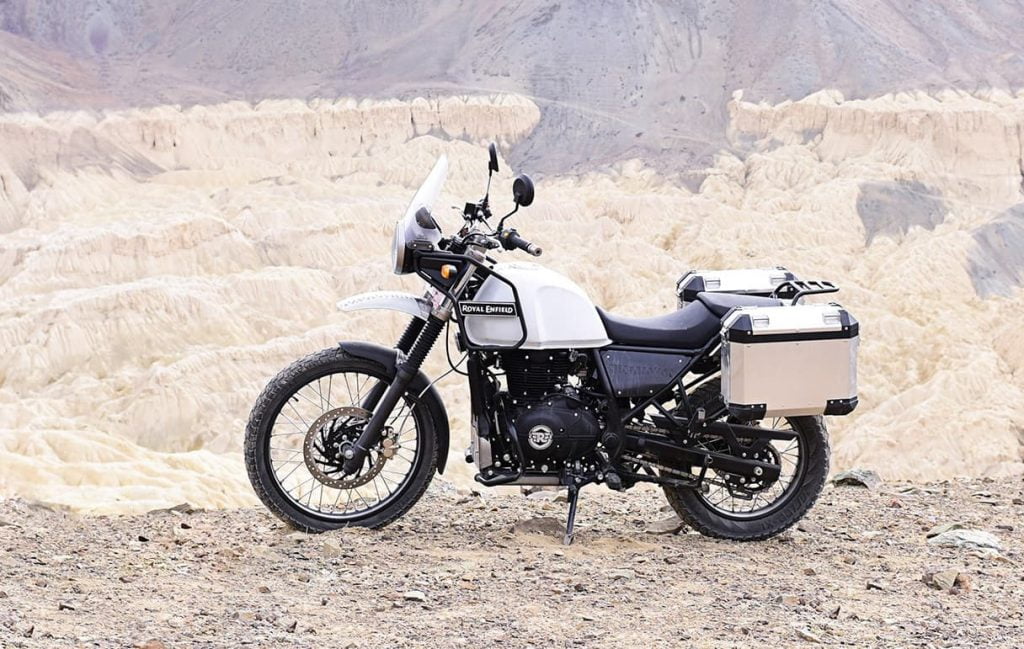
Ask on ADVrider what the best entry-level adventure bike is, and you’ll be surprised with how many people respond “Himalayan”! This has been true since the 1st gen — which has now been superseded by the significantly improved 2nd gen Himalayan.
Of course, just as many would respond that the Kawasaki KLR650 is another excellent choice. But I digress.
The appeal of the Himalayan is, like the KLR or other entry-level adventurers, its simplicity. It’s powered by a single-cylinder engine — a 411 cc SOHC 2-valve engine that has frequent service intervals but whose service is a doddle.
Power and torque are quite low-spec, but what do you expect? You’re not racing this across the Bonneville salt flats, you’re taking it around the world! For the record, it peaks in power at 24 ft-lb at 4250 rpm, and makes 18 kW / 24 hp at 6500 rpm, which is squarely at the entry-level range of things.
Final drive is via a cable clutch and a 5-speed transmission.
The appeal of the Himalayan is that a) anyone can ride it, and b) anyone can fix it. It has a windshield, but the engine is exposed and ready for you to have at it. And there’s even crash and rock protection so you can ensure you won’t have to deal with anything gnarly like a major leak.
Oh and also, c) anyone can afford it. Add the fact that it was designed by Pierre Terblanche, the same person who brought us the Ducati 999, and you can start to understand the appeal. This is a great-looking, entry-level, capable and affordable adventure motorcycle.
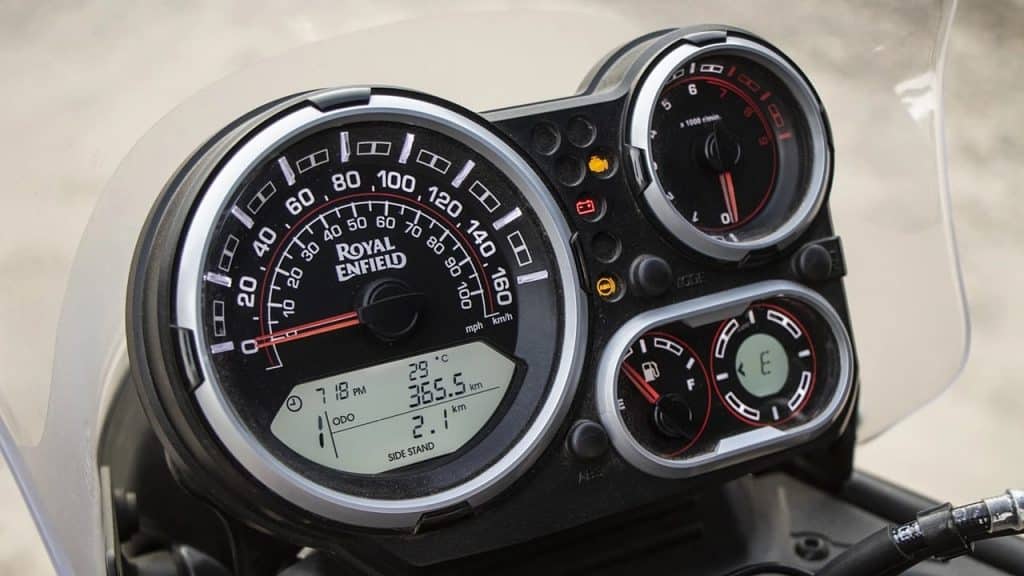
The Himalayan’s instrument cluster is a thing of beauty — a great balance of analogue and digital tech. It looks like a clock face from a classic watch.
The Royal Enfield Himalayan has, in theory, a top speed of 100 mph or 160 km/h according to the speedometer, but you’d be lucky to ever see 80 mph (130 km/h). It would even take a while to get to that speed.
Like most modern motorcycles, the Himalayan EFI (from 2020) comes with fuel injection and ABS. That and style and practicality — and nothing else.
Royal Enfield has steadily updated the Himalayan, too. From 2021, they gave it switchable ABS, and from 2022 it came with a “Tripper” navigation system, first seen on the Royal Enfield Meteor 350.
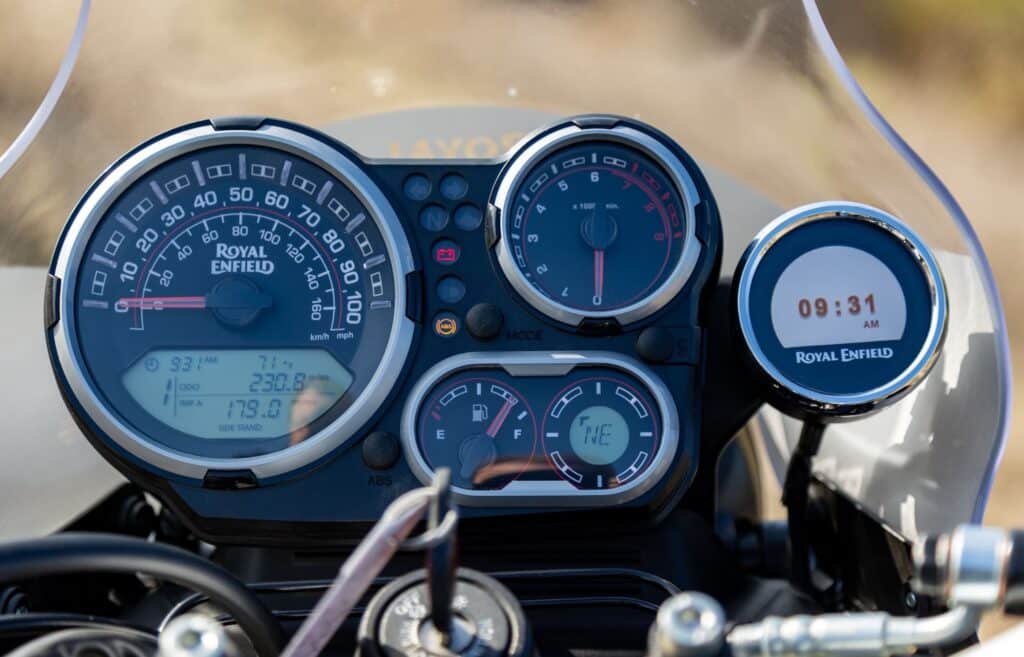
The revised Himalayan 450 gets a significantly more powerful motor, thanks to a capacity bump and — gasp — liquid cooling. See its maintenance schedule here.
Reference — Manual for the Royal Enfield Himalayan (EFI)
The maintenance schedule above was from the manual for the Himalayan BS6 model (the latest EFI version of the 411 cc motor). You can download it here.
We noticed some changes to the manual as the years went on, even though the fundamental spec has stayed the same. For example, the recommendation for how to clean the throttle body has changed. The prior recommendation was to use carburettor cleaner, but the new one is to remove the throttle body and wipe it down.
There are unexplained inconsistencies in the original Royal Enfield Himalayan BS6 manual. One interesting one is below. Either inspect or replace, or why bother inspecting? I have made these more consistent.

